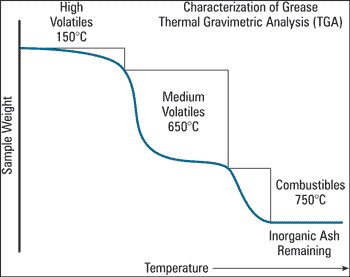DTA : Differential Thermal Analysis:
In this technique, Sample (material of our interest) and a reference material (must be inert) are supplied with heat. When there is a thermal transition (i.e., a physical or a chemical change that causes emission or absoption of heat) in the sample, thermal energy is added to either the sample or the reference to maintain both reference and sample at same temperature. This change of temperature is plotted against the programmed temperature.
 This can give details such as - Whether the transition is exothermic or endothermic. We can get details such as Glass transition temperature, crystallization, sublimation from the DTA curve.
This can give details such as - Whether the transition is exothermic or endothermic. We can get details such as Glass transition temperature, crystallization, sublimation from the DTA curve.TGA - Thermo Gravimetric Analysis:
In TGA, the sample is heated under controlled conditions and the loss of weight by the sample is measured. A TGA curve is plotted with weight in Y- axis and temperature in X-axis. It is generally used to determine the characteristics, strength of materials and their degradation temperature.
Comments
Post a Comment